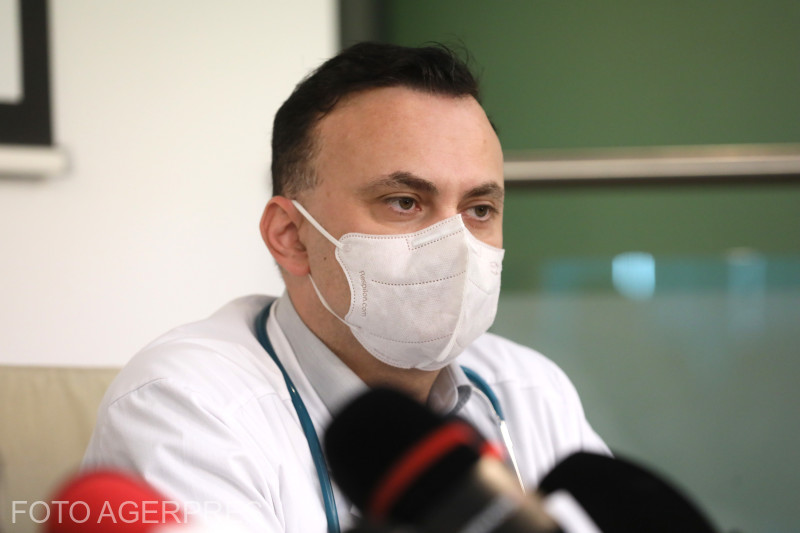
You have been infected with COVID-19 and even though you were cured/discharged from the hospital several months ago, you feel that you are not fully recovered. Many patients with COVID-19, especially those who have had a severe form of the disease, are left with sequelae or prolonged COVID syndrome after the infection is cured. However, few people know that they are different. What are the consequences, what is the long COVID syndrome and how to distinguish them?
What is the difference between a long COVID syndrome and the consequences
In the last 2 years, many times even our relatives or acquaintances ended up in a hospital bed with a COVID-19 infection and remained with the consequences or various symptoms, including after recovery from the infection itself.
It’s important to distinguish between persistent COVID, meaning symptoms that persist over time, and sequelae, said Adrian Marinescu, a primary care infectious disease physician and medical director of the Mateus Balsch Institute, during an event organized by the Coalition of Chronic Disease Patient Organizations. (TREE).
“The consequences are irreversible or partially irreversible changes. But it is important to distinguish between persistent symptoms and sequelae. Specifically, if you have fibrosis of the lungs – and fibrosis to a lesser extent in the Omicron version, but you can have it – the person remains affected,” explained Adrian Marinescu.

Dr. Adrian Marinescu, medical director of Matej Balsha Institute of Infectious Diseases
“For example, if you had a mild form of COVID and had fatigue for 3-6 months and then everything gradually returned, we don’t talk about the consequences. From here to the discussion of sequels is a long way. First of all, those who had critical forms, and especially those who were treated incorrectly, remain with the consequences,” says the doctor.
Long-term COVID means no consequences, emphasizes Adrian Marinescu: “Long COVID also means that you have remained with fatigue for 6 months and if the smell or taste has not returned completely. There were even cases when people lost their taste and then relearned it, and it happened that foods they did not like before now like them.”
How do we know if it’s ongoing COVID or the aftermath? “When there are problems that don’t go away even after a few months, you can talk about the consequences.”
The concept of prolonged COVID is quite relative, says Adrian Marinescu, but it usually means symptoms that persist for a period of time. Depending on how long this persists, we may see if this is prolonged COVID or the effects.
“Only time will tell us what will happen to these patients in the next 10 years”
Any organ can be affected by COVID-19, and patients who have been infected run the risk of being left with chronic diseases, warns Adrian Marinescu: “Any organ can be affected by COVID-19, there are many changes. and I believe that patients will remain with all kinds of chronic conditions. It will no longer be a long COVID, but there will be consequences – neurological, renal, dermatological, endocrine, etc. A critically ill COVID-19 patient can leave with anything – I mean part of the change.”
Doctor Adrian Marinescu believes that only time will tell us what will happen to these patients in the coming years: “Time will tell us what will happen in the next 10 years to those who have the consequences. I believe that people who have had severe cases and who have been in critical condition in the ICU will probably be left with some kind of problem for the rest of their lives, such as chronic respiratory failure or some other situation that will no longer look like the hospital. beginning”.

Adrian Marinescu has had such patients, he still keeps in touch with them and says that they “currently come through hospitals to the appropriate specialties with the possibility of success, but not always.”
Another category of patients are those who “tolerated the acute phase well, theoretically underwent resuscitation, and had a very low life expectancy – they died in the next 2-3 months. Then they had a severe infection, the consequences that appeared and remained afterwards, unfortunately, led to death.”
Cases of patients with consequences, less often with the Omicron version?
Fortunately, the Omicron variant is radically different from what it used to be: it affects the upper respiratory tract and very rarely reaches the level of the lungs, usually in those with immune system problems, says Dr. Adrian Marinescu.

“Unlike what happened in Delta, when everything was exactly the opposite: first it got into the lungs, the person ended up with respiratory failure, and everything was difficult,” explains the medical director of the Institute, Matej Balsh.
“Very few of those infected with the Omicron variant require oxygen at first. As a rule, those who arrive at the hospital later and in very small quantities need oxygen.”
Photo source: Dreamstime.com,
“In the case of Omicron, since it is a smaller number of serious forms, the consequences are certainly even less,” concluded doctor Adrian Marinescu.
Source: Hot News RU
James Springer is a renowned author and opinion writer, known for his bold and thought-provoking articles on a wide range of topics. He currently works as a writer at 247 news reel, where he uses his unique voice and sharp wit to offer fresh perspectives on current events. His articles are widely read and shared and has earned him a reputation as a talented and insightful writer.